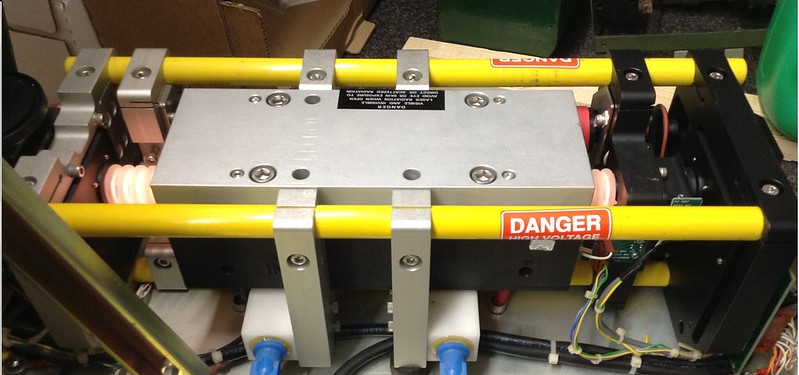Alaskan
0
- Joined
- Jan 29, 2014
- Messages
- 12,025
- Points
- 113
Interestingly soft spoken chap showing the innerds of a high power ND YAG while explaining how it works:
Follow along with the video below to see how to install our site as a web app on your home screen.
Note: This feature may not be available in some browsers.



 0011 by TwirlyWhirly555, on Flickr
0011 by TwirlyWhirly555, on FlickrI had the exact same YAG laser , unfortunately it suffered a lamp failure .
Did get a 80W run from it though .
0011 by TwirlyWhirly555, on Flickr
Yeah! Thought you had the same one! Was it just the lamp that failed or did it take out the YAG/Pump Chamber too?



Wish there was a ~800nm YAG, I guess it doesn't exist.
That's photonicinduction, I've been watching him a long time, check out his yt channel, he loves to break stuff. :eg:
Watch his trailer Below

>>>>> https://www.youtube.com/channel/UCl9OJE9OpXui-gRsnWjSrlA
Paul, please let me know how you are doing when you are feeling better and back online.
Folks, I found this photo of a Continuum ND:YAG (NY81-10) which was listed on ebay and trying to understand what the unit was doing. I tried to find something about it online, but so far no joy. In the below photo, it appears the output of the front most YAG in the photo was feeding into another YAG, after a couple of turning mirrors. Might this be a seed driven setup? I believe this was 1064nm which may have been pumping a NL crystal for VIS 532nm green or UV output, not sure, many of the parts are missing including the Pockel cell to the left of the first YAG where you can see the HV driver leads hanging.

If no one has an idea, I will try contacting Continuum but thought I'd try here first.
Edit: Learned this since the post; Was a 1064nm to 532nm SHG pulsed laser at one time, but I don't understand why the two YAG's yet. Perhaps for wavelength stability? The SHG and perhaps THG section long gone, robbed from the box for something else. Both YAG's show electrical wiring to flash tubes, so both were flashed, but one feeding into the other one, why? Is it possible to feed one YAG's output through another YAG to increase total power, that reason alone is why?
Here is a photo of a Continuum laser very similar to this one I found on Wikipedia

Late Edit:
I think I understand what is going on with the two YAG configuration now, one YAG is an oscillator, the second the amplifier, see the screen shot below:



